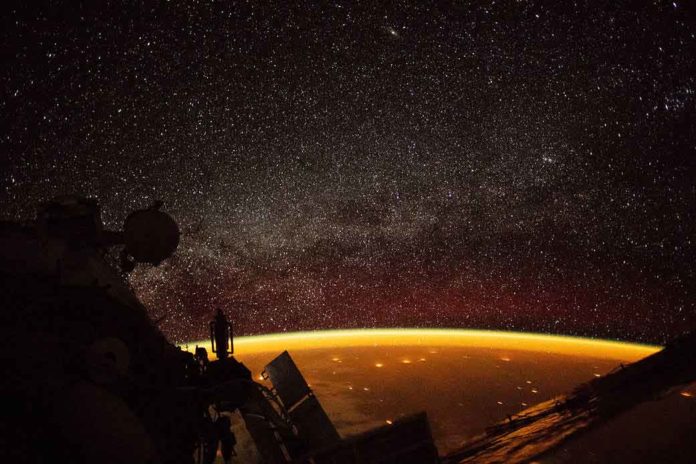The sky above Earth is never totally dark. Indeed, even around evening time, a delicate shine radiates from the edge of the upper atmosphere. It’s dependably there, appropriate above us, however, it’s precarious to see from Earth.
On October 7, 2018, an astronaut aboard the International Space Station (ISS) shot this photograph while orbiting at an altitude of more than 250 miles over Australia.
The photograph shows the curve of our planet, wrapped in a bubble of orange-colored light known as an airglow. Airglow is caused when nitrogen and oxygen in the atmosphere interact with bright radiation from the sun. The response energizes molecules in the atmosphere, making them strike into one another and discharge bright light.
Airglow uncovers a portion of the workings of the upper reaches of our atmosphere. It can enable researchers to find out about the development of particles close to the interface of Earth and space, including the associations between space weather and Earth weather.
Satellites offer one approach to contemplate this dynamic zone. NASA’s Ionospheric Connection Explorer (ICON) satellite will enable researchers to comprehend the physical procedures at work where Earth’s environment interfaces with close Earth space.
